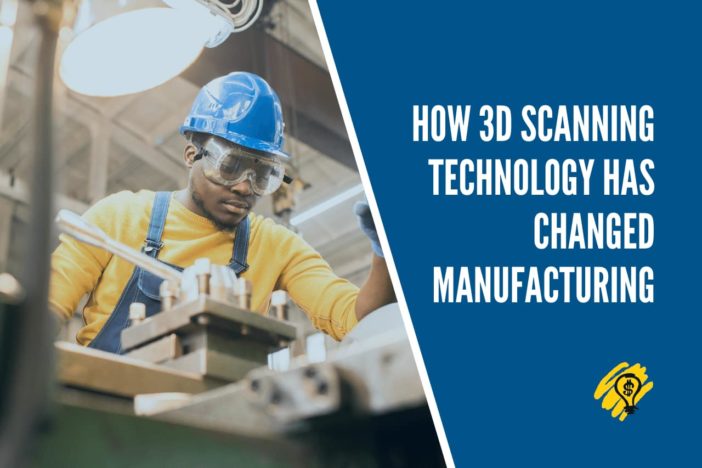Since the advent of the industrial age, the manufacturing industry has undergone numerous iterations. When we started manufacturing products on a large scale, the process predominantly used human resources, but as technology developed, more processes became automated. Many manufacturing plants today have advanced machinery doing most of the work while humans are there to oversee operations.
As 3D scanning and printing gain popularity, we will see more manufacturing businesses take advantage of this technology. Many processes involving design or measurements can now be completed much faster thanks to our recent developments, leading to more efficient overall outcomes for businesses. In this article, we will go through the significant changes related to 3D technology and how this has changed the landscape for manufacturers.
Background of 3D Scanning
The concept of 3D printing has been around since the 1940s when inventors wanted to implement a faster way of producing things. But it was not until the late 90s to early 00s that we started to see commercial products on the market. This prompted more investigation into the use case of 3D technology in the broader manufacturing sphere as these technologies became more available.
While 3D scanning can be based on many different technologies, the concept is the same. It is the process of measuring and collecting the data on real-world objects for digital reproduction using your own machines or hiring a 3D scanning company to do this for you. This measurement can be made using laser technology, photos, or LED lights to analyse physical objects.
Application to Manufacturing
Implementing the right technology to the manufacturing process can often lead to more efficient and precise outcomes. Generally, machines don’t have the same margin of error that humans do when undertaking precise mathematical measurements common to manufacturing. We will go through some of the applications and changes that 3D scanning has on the manufacturing industry.
Precise Measurements
The most significant advantage of using 3D scanning technology is the precision and detail we can achieve. It is particularly useful to measure extremely small and intricate moving parts within the engineering process that would otherwise be extremely difficult or impossible to do by hand. This means that moving forward, we will be able to develop much more advanced and space-efficient technology as our tools become more and more precise.
Easy Replication & Access to Parts
Another advantage is the accessibility to 3D print and scan parts of the items you manufacture. Since all your design components can be easily saved or scanned with accuracy, we can repair any defects faster. This is even applicable to consumers if they have commercial units available at home.
Quality Control
The success of a company relies highly on quality control and the ability to produce quality products consistently. Implementing 3D scanning in the quality control process can improve the overall output of your products and set you aside from your competition. This is because 3D scanning is so accurate and detailed that it can ensure that everything you produce has the exact specifications you require.
More Advanced Prototyping
Combining 3D scanning and printing systems can result in much more efficient prototyping when you’re in the design phase. It can be beneficial to be able to scan your designs fast and either send them to other staff members or make significant revisions to your chosen software system. Ultimately, this will result in better quality outcomes for your products since it slashes the unnecessary logistics in half.
Conclusion
As with all technological advancements, 3D scanning will likely result in higher quality and more efficient production in the manufacturing industry. These advancements open us up to more exciting possibilities in the future. If you’re in the manufacturing industry, it’s a good idea to start looking at 3D scanning to experience these improvements.





